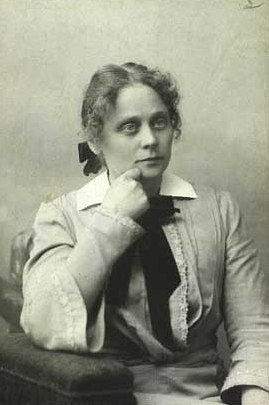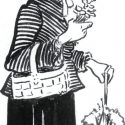Marie Bregendahl came from solid farming stock in Jutland and was obliged as the eldest of nine children to take over responsibility for the house when her mother died in childbirth in 1879. At the age of nineteen, she went to folk high school and, after moving several times, ended up in Copenhagen, where she married the later poet Jeppe Aakjær in 1893. The following year they had a son and divorced in 1900. As a single mother, she earned a living as a housekeeper and later as a writer. With the exception of her travels in Norway in 1901 and 1908, in Germany in 1926, and in Italy in 1928 on a Tagea Brandt travel scholarship, she lived and wrote in seclusion.
Her debut work was the story “Da Katten løb med Frikadellerne”, which was printed in 1899 in the magazine Vagten. It was followed by her novel about marriage Hendrik i Bakken, 1904. Her breakthrough came in 1912 with the publication of her novel En Dødsnat, which describes a mother’s death during childbirth as seen through the eyes of her adolescent children. In her cycle of stories about everyday life in an old, pre-industrial farming community, Billeder af Sødalsfolkenes Liv, 1914-1923, the erotic element in the lives of individual women occasionally shines through. The urge for an exclusively erotic relationship between man and woman is also a main theme in her novel Holger Hauge og hans Hustru 1-2, 1934-1935. Marie Bregendahl’s muted humour and characteristic prose are built on a sophisticated development of the naturalist and Impressionist idiom. She has always had a place in literary history; however, it used to be her depictions of her native soil that appealed to the readers, whereas today they are more interested in the modern artist and story-teller.




